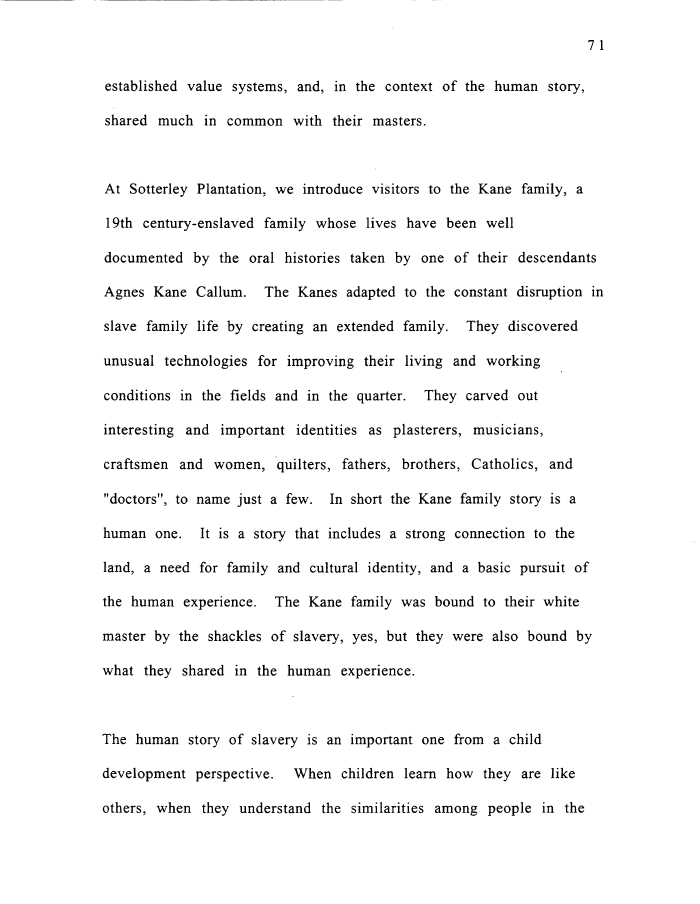 |
||||
|
TASK FORCE TO STUDY THE HISTORY AND LEGACY OF SLAVERY IN MARYLAND (Final Report) 1999/12/31 MdHR 991422 MdHR 991422, Image No: 80 Print image (39K) |
 |
||||
|
TASK FORCE TO STUDY THE HISTORY AND LEGACY OF SLAVERY IN MARYLAND (Final Report) 1999/12/31 MdHR 991422 MdHR 991422, Image No: 80 Print image (39K) |
| 71 established value systems, and, in the context of the human story, shared much in common with their masters. At Sotterley Plantation, we introduce visitors to the Kane family, a 19th century-enslaved family whose lives have been well documented by the oral histories taken by one of their descendants Agnes Kane Callum. The Kanes adapted to the constant disruption in slave family life by creating an extended family. They discovered unusual technologies for improving their living and working conditions in the fields and in the quarter. They carved out interesting and important identities as plasterers, musicians, craftsmen and women, quilters, fathers, brothers, Catholics, and "doctors", to name just a few. In short the Kane family story is a human one. It is a story that includes a strong connection to the land, a need for family and cultural identity, and a basic pursuit of the human experience. The Kane family was bound to their white master by the shackles of slavery, yes, but they were also bound by what they shared in the human experience. The human story of slavery is an important one from a child development perspective. When children learn how they are like others, when they understand the similarities among people in the |